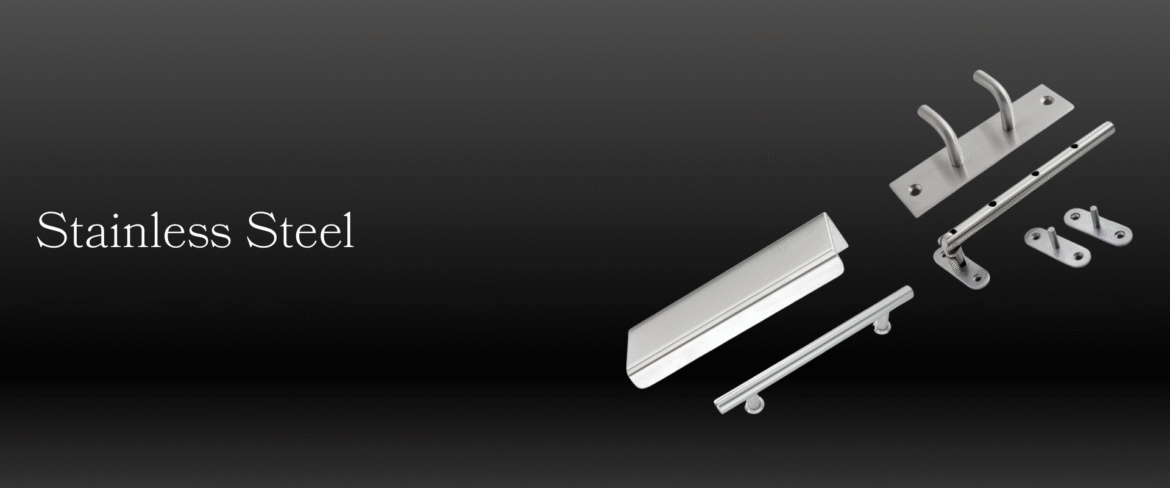304 vs. 316 Stainless Steel: Which Grade is Right for Your Door Handles?
When choosing hardware for homes, offices, or commercial projects, the material of your fittings plays an important role in both appearance and durability. One of the most popular options in the market today is stainless steel—known for its strength, sleek design, and corrosion resistance. However, not all stainless steel is the same. The two most common grades, 304 and 316, are widely used in architectural hardware, and understanding the difference between them is crucial before making a choice.
Being a top supplier of stainless steel door handles, Samirika Exports frequently answers enquiries from clients regarding the best grade for door handles and associated hardware. This blog post will explain the distinctions between 304 and 316 stainless steel, their uses, and which one might be best for your area to make things easier for you.
Why Is Stainless Steel the Best Material for Door Handles?
One of the fixtures in any building that is used the most is the door handle. Handles for kitchen cabinets, office doors, and a home’s main entrance need to be sturdy enough to endure frequent use. Due to its resistance to corrosion and rust, stainless steel has emerged as the material of choice.
Understanding the Basics: 304 vs. 316 Stainless Steel
Though both 304 and 316 stainless steel look very similar, their composition is slightly different, which affects their performance in certain environments.
304 Stainless Steel
- Contains 18% chromium and 8% nickel.
- Known as the most common stainless steel grade.
- Excellent resistance to rust and corrosion in normal environments.
- Strong, versatile, and cost-effective.
316 Stainless Steel
- Contains 16% chromium, 10% nickel, and 2% molybdenum.
- The addition of molybdenum makes it more resistant to corrosion, especially in salty or acidic environments.
- Slightly more expensive but offers better performance in harsh outdoor or coastal conditions.
Important Distinctions Between 316 and 304 Stainless Steel
Let’s examine key factors to compare the two grades:
1. Resistance to corrosion
Under typical indoor and outdoor circumstances, 304 stainless steel is resistant to rust and discolouration.
2. Strength and Durability
Both grades are extremely strong and capable of handling heavy usage. However, 316 tends to perform better in harsher conditions where strength and corrosion resistance are equally important.
3. Cost
- 304 Stainless Steel is more affordable and widely available.
- 316 Stainless Steel is priced higher due to its molybdenum content and added resistance features.
4. Applications
- 304 Stainless Steel is ideal for indoor handles, office fittings, furniture hardware, and stainless steel cabinet hardware.
- 316 Stainless Steel is better suited for outdoor handles, marine environments, gates, and field gate hardware exposed to the elements.
Which Stainless Steel Grade Should You Choose for Door Handles?
The decision between 304 and 316 stainless steel depends on where and how the handles will be used:
- For Homes and Offices – If your handles will be used indoors or in environments with minimal exposure to moisture, 304 stainless steel is more than sufficient. It offers durability and an elegant look at a reasonable cost.
- For Outdoor or Coastal Areas – If the handles are installed on main entrances, gates, or exposed furniture near the coast, 316 stainless steel is the smarter investment. It can withstand salty air, heavy rains, and outdoor conditions without losing its finish.
In simple terms: 304 works best indoors, while 316 is the go-to choice for tough outdoor applications.
Stainless Steel and Modern Hardware Applications
The beauty of stainless steel lies in its versatility. Whether it’s stainless steel door handles, field gate hardware, or stainless steel cabinet hardware, the right grade ensures both performance and design excellence.
- Door Handles – Both 304 and 316 grades are perfect for everyday handles. Choose based on environment and budget.
- Cabinet Hardware – For kitchens, wardrobes, or furniture, 304 stainless steel is usually preferred. It provides a clean look and strong functionality.
- Gate Hardware – For outdoor gates, fences, and heavy-use areas, 316 stainless steel performs better because of its resistance to harsh weather.
Tips for Choosing the Right Stainless Steel Hardware
- Consider the Environment – Is it indoors, outdoors, or coastal? This will guide you toward 304 or 316.
- Think Long-Term – While 316 may cost more upfront, it saves money in the long run by lasting longer in outdoor conditions.
- Match with Design – Stainless steel comes in polished, matte, and brushed finishes. Choose one that complements your interiors or exteriors.
- Rely on a Trusted Supplier – Work with a reliable Stainless Steel Door Handles Supplier to ensure quality, durability, and proper guidance.
Conclusion
Both 304 and 316 stainless steel are excellent materials for door handles and related hardware. The choice depends largely on the environment in which the handles will be used. If you’re furnishing interiors like homes, offices, or furniture, 304 stainless steel offers durability and style at a reasonable price. For outdoor gates, entrances, or areas with harsh conditions, 316 stainless steel is the better option, thanks to its superior corrosion resistance.
When choosing hardware, long-term dependability is more important than appearance. Selecting the appropriate grade for stainless steel door handles, field gate hardware and cabinet hardware guarantees that your fixtures will continue to be both practical and fashionable for many years to come.
Samirika Exports is a well-known brand in the sector for consumers looking for superior goods supported by knowledge. They remain a top supplier of stainless steel door handles in India thanks to their reputation for high-quality stainless steel hardware, creative designs, and affordable prices. Samirika Exports offers products that blend durability, style, and long-lasting value, whether you’re looking for cabinet hardware for your interior or sturdy gate fittings for outdoor areas.

